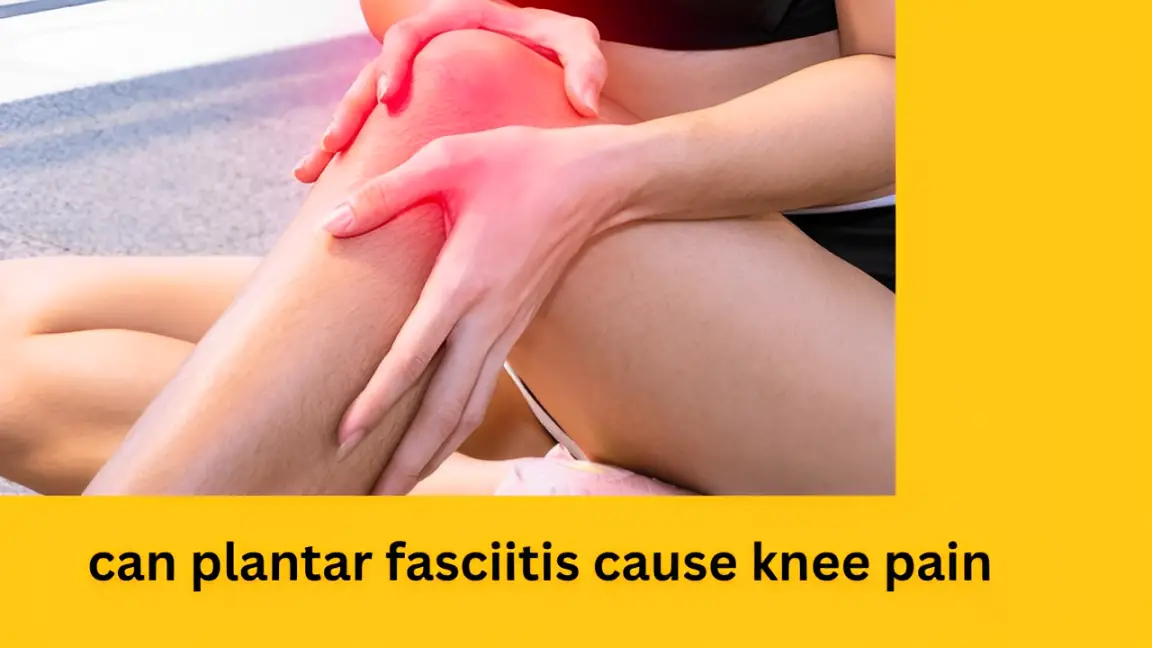Many people who are active often complain about foot and knee pain. can plantar fasciitis cause knee paincan be a sharp pain in the heel or foot’s bottom.
Research shows a link between foot pain and knee issues. Knowing this connection is key to finding knee pain relief.

can plantar fasciitis cause knee pain
This article will look into how plantar fasciitis and knee pain are connected. We’ll explore the causes and relief methods.
Key Takeaways
- Understanding the link between foot pain and knee discomfort
- Identifying common symptoms of plantar fasciitis
- Exploring relief methods for knee pain
- The importance of addressing foot pain for overall knee health
- Potential causes of knee pain related to plantar fasciitis
Understanding Plantar Fasciitis and Its Effects
Many know the term plantar fasciitis, but its full impact on foot health is not clear. It’s more than just a foot problem; it affects mobility and overall health.
What Is Plantar Fasciitis?
Plantar fasciitis is when the plantar fascia, a tissue at the foot’s bottom, gets inflamed. This can cause pain and stiffness, especially in the heel and foot’s bottom. The plantar fascia supports the arch and helps absorb shock during activities.

plantar fasciitis causes
Common Symptoms and Causes
Plantar fasciitis symptoms include sharp pain in the heel or foot’s bottom, especially after rest or morning. Activities like running or jumping can make it worse. Causes include overuse, poor foot mechanics, and bad shoes.
| Cause | Description | Effect on Plantar Fascia |
| Overuse | Repetitive strain from activities like running | Increased inflammation and pain |
| Poor Foot Mechanics | Abnormal gait or foot structure | Uneven distribution of stress |
| Inadequate Footwear | Lack of proper arch support or cushioning | Increased strain on the plantar fascia |
Can Plantar Fasciitis Cause Knee Pain?
Plantar fasciitis can lead to knee pain by changing how the foot works. This condition causes pain in the heel and foot. But it can also affect other parts of the body.
The biomechanical connection between the foot and knee is key. The foot and knee are connected in the lower body. Problems in one can affect the other.
The Biomechanical Connection
The biomechanical connection between plantar fasciitis and knee pain is complex. When the plantar fascia is inflamed, it changes how we walk. This can lead to knee pain.d, it can alter the way a person walks, leading to changes in gait.

biomechanical connection between plantar fasciitis and knee pain
How Altered Gait Affects Your Knees
An altered gait from plantar fasciitis can stress the knee. People may walk differently to avoid heel pain. This uneven walking can harm the knee.
This change in walking can wear down the knee. Studies show that proper walking is important for healthy knees.
Research Supporting the Connection
Studies have looked at the link between plantar fasciitis and knee pain. They found that people with plantar fasciitis often get knee pain. This is because they change how they walk to avoid foot pain.
“The presence of plantar fasciitis may contribute to the development of knee pain by altering lower extremity biomechanics.”
Journal of Orthopaedic & Sports Physical Therapy
A study compared people with and without plantar fasciitis. Those with the condition were more likely to have knee pain. This supports the link between the two.
| Condition | Incidence of Knee Pain |
| Plantar Fasciitis | 65% |
| No Plantar Fasciitis | 30% |
The research shows a strong link between plantar fasciitis and knee pain. Changes in walking and biomechanics play a big role.
Effective Management of Knee Pain Associated with Plantar Fasciitis
Understanding the link between plantar fasciitis and knee pain is key. Plantar fasciitis can change how we walk, leading to knee pain. Treating the root cause is important for relief.
Treating plantar fasciitis can help knee pain. This includes using orthotics, physical therapy, and the right shoes. This approach helps the whole lower body feel better.
Getting help from a healthcare provider or podiatrist is important. They can give personalized advice for managing plantar fasciitis and knee pain. This can lead to better knee pain relief.
FAQ
What is plantar fasciitis?
Plantar fasciitis is a common condition. It causes pain in the heel and foot. This is usually because of inflammation in the plantar fascia, a tissue that supports the arch of the foot.
How does plantar fasciitis cause knee pain?
Plantar fasciitis can change how you walk, putting more stress on your knee. This biomechanical connection between your foot and knee can lead to knee pain.
What are the common symptoms of plantar fasciitis?
Signs of plantar fasciitis include heel and foot pain, foot and ankle stiffness. Pain gets worse after rest or activity.
Can orthotics help alleviate knee pain caused by plantar fasciitis?
Yes, orthotics like shoe inserts or custom ones can help. They redistribute pressure and reduce knee stress, easing pain.
Are there any exercises that can help relieve knee pain caused by plantar fasciitis?
Yes, exercises like toe curls and heel raises strengthen the foot and ankle. They improve gait and reduce knee stress, easing pain. Stretching the calf and Achilles tendon also helps.
How is plantar fasciitis typically treated?
Treatment for plantar fasciitis includes rest, ice, stretching, and strengthening. Orthotics and supportive shoes are also used. Sometimes, physical therapy or corticosteroid injections are needed.
Read More – sharp stabbing pain in knee comes and goes











Leave a Comment